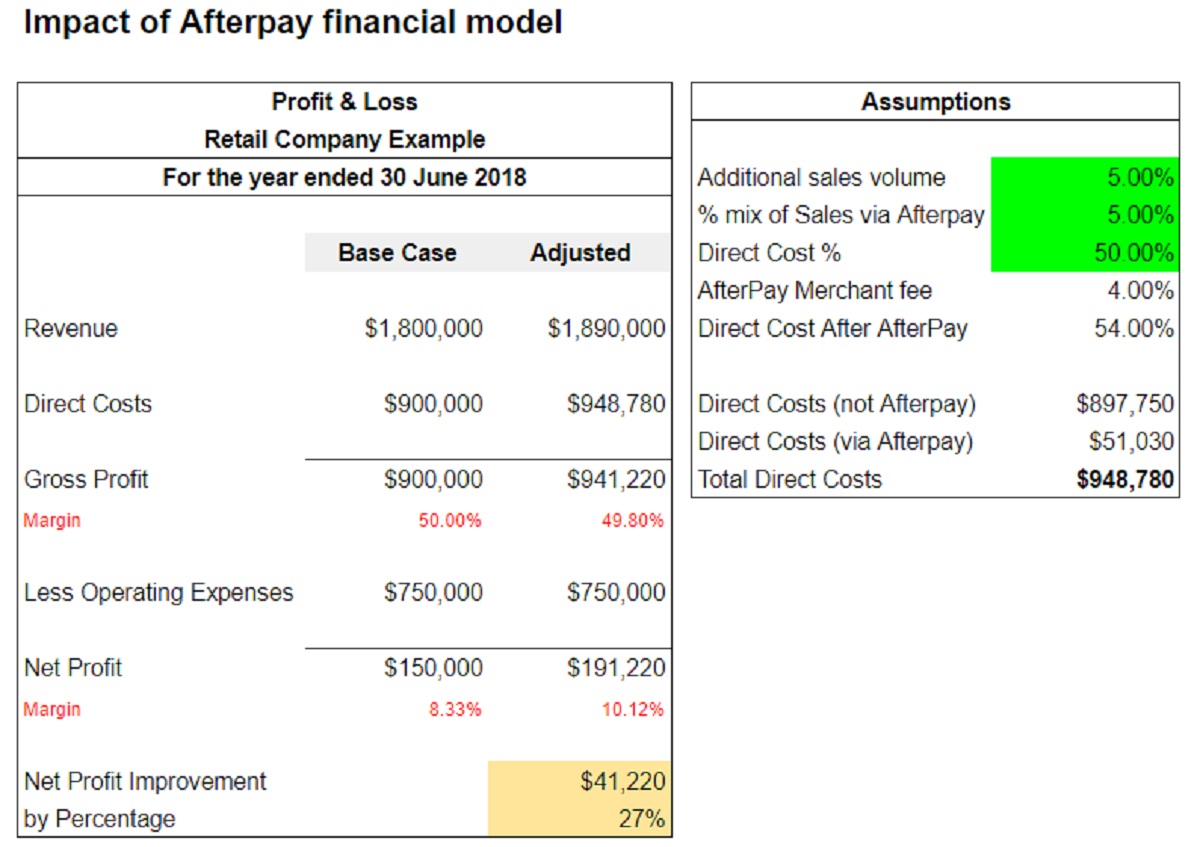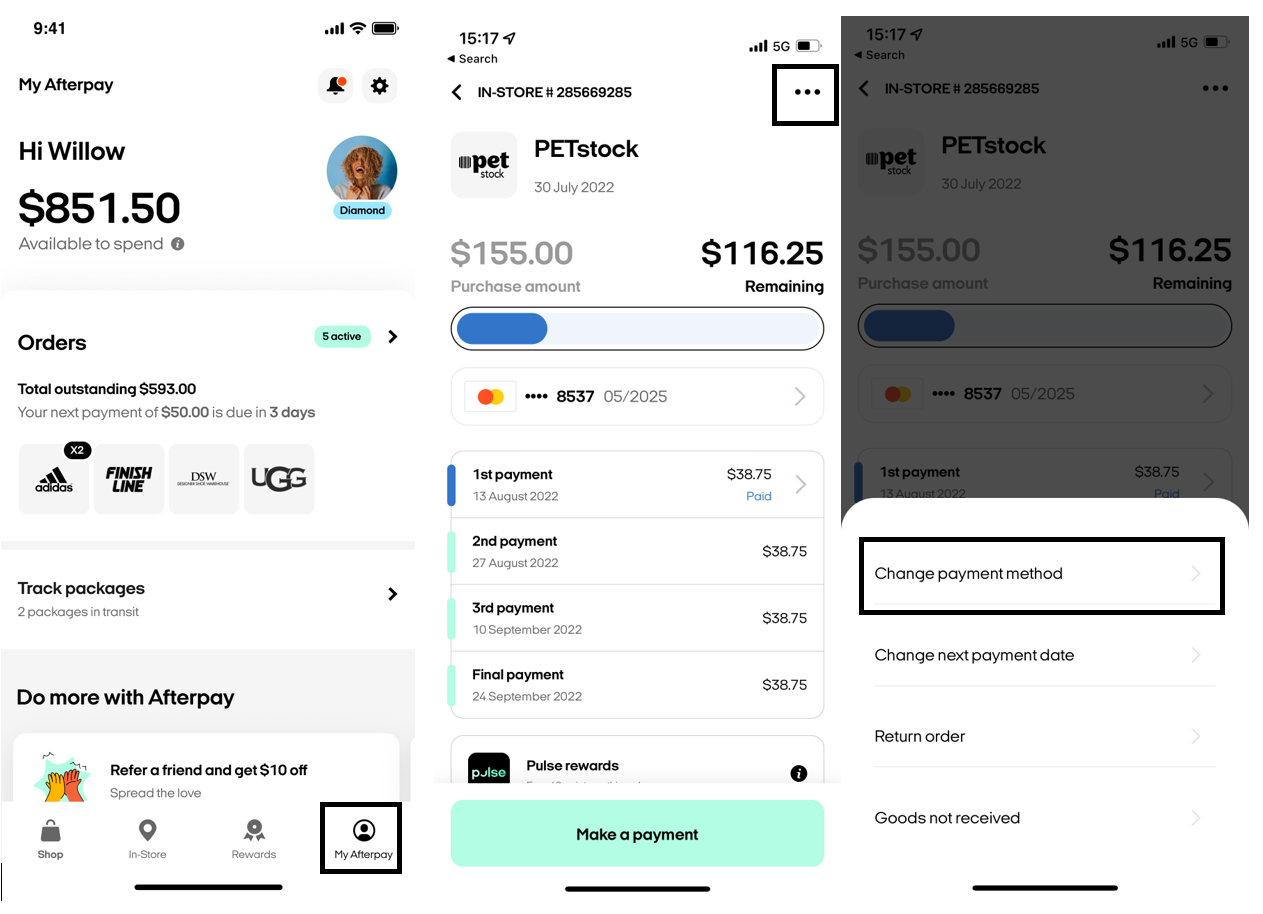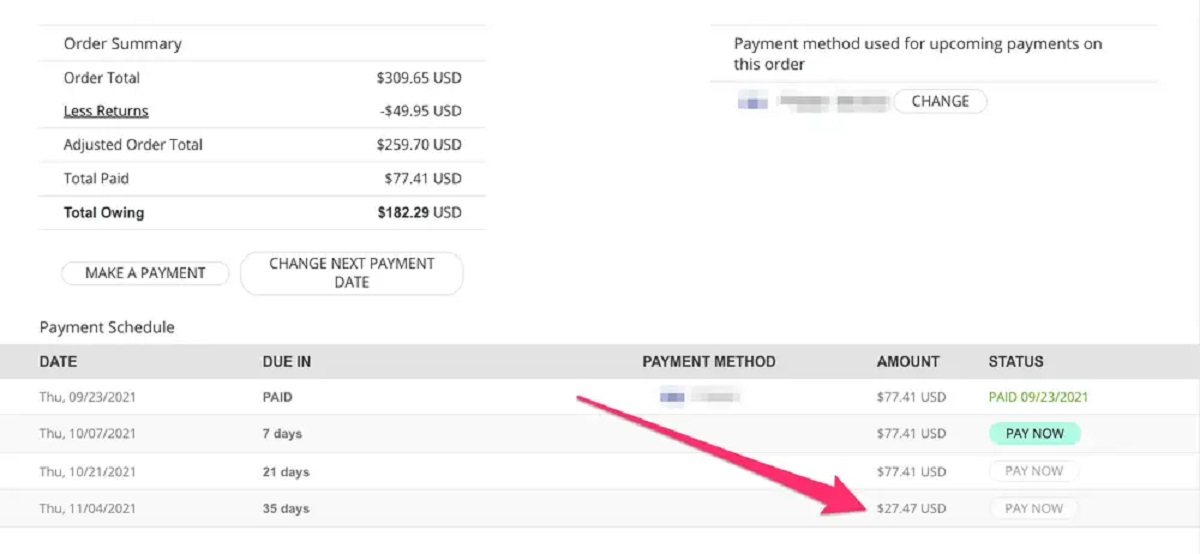Introduction
Welcome to our guide on understanding how much Afterpay charges for its services. Afterpay has gained popularity as a convenient payment method, allowing consumers to make purchases and pay for them in installments rather than upfront. However, like any financial service, it’s important to understand the costs involved before diving in.
With Afterpay, customers can enjoy the flexibility of breaking down their payments into manageable installments, making it easier to purchase items they need or want without straining their budget. While this can be a great option for many consumers, it’s crucial to be aware of the fees and charges associated with using Afterpay to ensure that it aligns with your financial goals.
In this guide, we will walk you through how Afterpay works and explain the various costs involved. We will delve into the fees and charges you may encounter, as well as discuss late fees and missed payments. Additionally, we will provide you with tips on how to calculate the overall cost of using Afterpay and offer advice on how to avoid extra charges.
Understanding the financial implications of using Afterpay will empower you to make informed decisions about whether it is the right payment method for you and how to use it responsibly. By the end of this guide, you will have a comprehensive understanding of how Afterpay charges its customers and be equipped with the knowledge to make the most out of this payment option.
So, let’s dive in and explore how Afterpay works and the costs associated with it. Whether you’re considering using Afterpay for the first time or have already had experience with it, this guide will provide you with valuable insights on how to make the most out of this payment solution without being caught off guard by hidden fees and charges.
How Afterpay Works
Afterpay is a “buy now, pay later” service that allows consumers to make purchases and pay for them in installments. It offers a convenient alternative to traditional credit cards and personal loans, providing shoppers with the flexibility to split their payments into four equal installments.
To use Afterpay, customers need to create an account and link it to their debit or credit card. Once the account is set up, they can browse online or shop in-store with partnered retailers. When making a purchase, they simply select Afterpay as the payment option at checkout.
Afterpay customers are required to pay the first installment at the time of purchase. The remaining three payments are automatically deducted from their linked card every two weeks. This allows customers to spread out their payments over a period of six weeks, making it more manageable to budget for their purchases.
One of the key advantages of using Afterpay is that there is no interest charged on the payments. However, it’s important to note that there are fees and charges associated with this service, which we will discuss in the next section.
Another benefit of Afterpay is the quick and convenient approval process. Unlike traditional credit applications that may require a credit check and lengthy paperwork, Afterpay’s approval is based on factors such as the customer’s payment history with Afterpay and the amount of the purchase. This makes it accessible to a wide range of consumers, including those with limited or no credit history.
During the repayment period, customers can manage their Afterpay account through the mobile app or the Afterpay website. This allows them to view upcoming payments, make changes to payment dates, and keep track of their overall balance. It’s important to stay on top of payment deadlines to avoid late fees and ensure a smooth Afterpay experience.
Now that we have explored how Afterpay works, let’s move on to the next section, where we will uncover the costs associated with using this service. Understanding the fees and charges will help you make informed decisions and avoid any unexpected financial surprises along the way.
The Cost of Using Afterpay
While Afterpay provides a convenient way to finance purchases, it’s essential to understand the costs involved. Although Afterpay doesn’t charge interest on its payments, there are fees and charges that customers should be aware of before opting for this service.
The main cost associated with Afterpay is the establishment fee. When you make your first purchase using Afterpay, you may be charged a small one-time fee. This fee varies depending on the total value of your purchase, but it is typically around $10 for purchases below $500. This fee helps cover the administrative costs of setting up and maintaining your Afterpay account.
In addition to the establishment fee, there may be other fees and charges that vary depending on individual circumstances. For example, if a scheduled payment fails due to insufficient funds in your linked card, Afterpay may charge a late fee. These late fees can range from $10 to $25, so it’s important to ensure you have sufficient funds in your account to cover the payment.
It’s worth noting that Afterpay also imposes fees for missed payments. If you fail to make a payment within 24 hours of the due date, Afterpay may charge you an additional fee. This fee is typically higher than the late fee and can significantly increase the overall cost of your purchase.
Aside from these fees, it’s important to remember that Afterpay is designed to be a short-term payment solution. If you choose to extend your payment plan or miss multiple payments, you may incur additional fees and charges. It’s advisable to use Afterpay responsibly and only take on purchases within your budget to avoid unnecessary costs.
To calculate the overall cost of using Afterpay, it’s important to consider the fees mentioned above and any potential late or missed payment fees. By understanding these costs, you can make an informed decision about whether Afterpay is the right option for your financial needs.
In the next section, we will delve deeper into the fees and charges associated with Afterpay, providing you with a comprehensive understanding of the potential costs involved. Stay tuned to gain valuable insights into managing your Afterpay payments effectively and avoiding any unnecessary fees.
Fees and Charges
When using Afterpay, it’s important to familiarize yourself with the various fees and charges that may be incurred. By understanding these costs, you can plan your purchases and payments more effectively.
As mentioned earlier, the establishment fee is the initial cost you may incur when making your first purchase using Afterpay. This fee typically ranges from $10 to $20, depending on the total value of your purchase. It is a one-time fee and is added to your first payment.
In addition to the establishment fee, Afterpay charges late fees if a scheduled payment fails due to insufficient funds in your linked card. This fee can range from $10 to $25 and is charged for each missed payment. It’s important to note that these fees can quickly accumulate if multiple payments are missed, increasing the overall cost of your purchase.
Furthermore, Afterpay may impose fees for missed payments, which are typically higher than the late fees. If you fail to make a payment within 24 hours of the due date, you may be charged an additional fee. These missed payment fees can significantly impact the total cost of your purchase, making it important to stay on top of your payment schedule.
It’s crucial to remember that responsible use of Afterpay means making your payments on time and within your budget. By doing so, you can avoid unnecessary fees and charges. It’s also worth noting that Afterpay provides notifications and reminders to ensure you stay informed about upcoming payments.
In some cases, retailers may offer promotions or waive certain fees. It’s important to read the terms and conditions carefully to take advantage of any potential discounts or promotional offers. Different retailers may have varying policies, so always check the details before finalizing your Afterpay purchase.
To keep track of your payments and avoid any surprises, you can access your Afterpay account through their website or mobile app. This allows you to view upcoming payments, make changes to payment dates if needed, and monitor your overall balance. It’s important to stay organized and ensure that you have sufficient funds in your linked card to cover your Afterpay payments.
By understanding the fees and charges associated with Afterpay, you can make well-informed decisions about your purchases and better manage your finances. Now that you have a solid understanding of the costs involved, we will proceed to the next section, where we will delve into late fees and missed payments in more detail.
Late Fees and Missed Payments
Late fees and missed payments are important considerations when using Afterpay. It’s crucial to understand the consequences of failing to make your payments on time to avoid incurring additional fees and negatively impacting your credit.
Afterpay charges a late fee if a scheduled payment fails due to insufficient funds in your linked card. This fee typically ranges from $10 to $25 and is charged for each missed payment. It’s important to note that these fees can add up quickly if multiple payments are missed, significantly increasing the overall cost of your purchase.
Additionally, Afterpay may impose missed payment fees that are typically higher than the late fees. If you fail to make a payment within 24 hours of the due date, you may be charged an additional fee. This fee, combined with the late fee, can significantly impact the total cost of your purchase and may affect your ability to continue using Afterpay in the future.
Late fees and missed payment fees are not only expensive but can also have a negative impact on your credit score. Afterpay has the right to report missed payments to credit bureaus, potentially affecting your creditworthiness. It’s crucial to make your payments on time to maintain a good financial standing and avoid any potential repercussions.
To avoid late fees and missed payments, it’s important to stay organized and ensure that you have sufficient funds in your linked card to cover your Afterpay payments. Keeping track of your payment schedule and setting reminders can help you stay on top of your financial commitments.
In case you anticipate difficulties in making a payment, it’s recommended to reach out to Afterpay’s customer service. They may be able to assist you with rescheduling payments or providing guidance on alternative solutions to avoid late fees.
Overall, it’s crucial to understand the financial implications of late fees and missed payments when using Afterpay. By making timely payments and being responsible with your purchases, you can avoid unnecessary fees, maintain a good credit score, and have a positive experience with Afterpay.
In the next section, we will discuss how to calculate the overall cost of using Afterpay. This will provide you with valuable insights into understanding the true cost of your purchases and help you make informed decisions about using Afterpay responsibly.
Calculating the Overall Cost
To make informed financial decisions when using Afterpay, it’s essential to calculate the overall cost of your purchases. Understanding the total amount you will be paying, including any fees and charges, can help you budget effectively and avoid surprises.
To calculate the overall cost, start by considering the purchase price of the item you intend to buy. This is the initial amount that will be divided into four equal installments. Be aware of any additional costs, such as shipping fees or taxes, as these will also contribute to the overall amount you will be paying.
Next, factor in the establishment fee. As we mentioned earlier, Afterpay charges a one-time fee when you make your first purchase. The amount of this fee varies depending on the total value of your purchase but is typically around $10 to $20.
If you anticipate the possibility of late or missed payments, it’s essential to also include potential late fees and missed payment fees in your calculations. Late fees can range from $10 to $25 for each missed payment, while missed payment fees are typically higher. These fees can significantly increase the overall cost of your purchase if you do not adhere to the payment schedule.
Once you have the purchase price, establishment fee, and potential fees accounted for, you can calculate the total amount you will be paying over the course of the Afterpay installment plan. Add all these costs together to get an accurate understanding of the overall expense.
It’s worth noting that the interest-free nature of Afterpay is a significant advantage. Unlike traditional credit options, you won’t be charged interest on your payments. However, it’s important to consider the fees and charges mentioned above to determine the true cost of using Afterpay.
By calculating the overall cost, you can make an informed decision about whether Afterpay is the right payment option for your needs. It can also help you evaluate whether the item you’re purchasing is within your budget and whether you can comfortably manage the ensuing payments.
In the next section, we will provide you with valuable tips on how to avoid extra charges when using Afterpay. Following these suggestions will allow you to enjoy the benefits of Afterpay while minimizing any additional costs or financial difficulties.
Tips to Avoid Extra Charges
To make the most of Afterpay and avoid incurring unnecessary fees, it’s important to follow these tips and strategies when using the service.
1. Plan your purchases: Before using Afterpay, consider whether the item you’re purchasing is a necessity or a want. Creating a monthly budget will help you determine if you can afford the installment payments and prevent overspending.
2. Set reminders: Stay on top of your payment schedule by setting reminders for upcoming payments. Afterpay provides notifications, but it’s helpful to have additional reminders in place to avoid missing any payments.
3. Keep track of your balance: Regularly monitor your Afterpay account to see your outstanding balance and upcoming payment dates. This will help you stay organized and ensure that you have sufficient funds in your linked card to cover the payments.
4. Pay on time: Make your Afterpay payments on or before the due dates to avoid late fees. Late fees can accumulate quickly, significantly increasing the overall cost of your purchase.
5. Review terms and conditions: Familiarize yourself with the terms and conditions of Afterpay, as well as the policies of the specific retailers you’re purchasing from. Understanding the rules and potential fees will help you make informed decisions and avoid any surprises.
6. Communicate with Afterpay: If you anticipate difficulties in making a payment, reach out to Afterpay’s customer service. They may be able to assist you with alternative payment arrangements or provide guidance on managing your Afterpay account effectively.
7. Avoid unnecessary extensions: While Afterpay offers the flexibility to extend payments for certain purchases, it’s generally advisable to avoid extensions. Extending payments can lead to additional fees and prolong the overall cost of the item.
8. Consider the total cost: Calculate the overall cost of your purchase, including the establishment fee and potential late or missed payment fees. This will give you a clear understanding of the total amount you’ll be paying over time.
By following these tips and strategies, you can use Afterpay responsibly and avoid any extra charges. Responsible use will help you maintain good financial health and take full advantage of the convenience offered by Afterpay.
In the next section, we will summarize the key points discussed throughout this guide. This summation will provide you with a comprehensive overview of Afterpay’s costs and how to manage them effectively.
Conclusion
Afterpay offers a convenient way to make purchases and pay for them in installments, providing flexibility and budgeting options for consumers. However, it’s crucial to understand the costs associated with using Afterpay to make informed financial decisions.
By familiarizing yourself with the fees and charges, such as the establishment fee, late fees, and missed payment fees, you can calculate the overall cost of your purchases accurately. Proper planning, setting reminders, and staying on top of your payments will help you avoid unnecessary charges and maintain good financial health.
Remember to review the terms and conditions of Afterpay and the specific policies of retailers to ensure you understand the rules regarding payments and potential fees. Keeping track of your Afterpay account, communicating with customer service when needed, and avoiding unnecessary extensions will help you make the most out of this payment option.
Using Afterpay responsibly means staying within your budget and making payments on time. By doing so, you can take advantage of the flexibility provided by Afterpay without incurring extra charges or negatively impacting your credit.
Whether you’re a first-time Afterpay user or have previous experience with the service, the key is to be proactive and mindful of your financial commitments. By following the tips and recommendations provided in this guide, you can confidently navigate the costs of Afterpay and make informed decisions about your purchases.
We hope this guide has shed light on how Afterpay works and the costs involved. By understanding the fees and charges and adopting responsible financial practices, you can make the most out of Afterpay while staying in control of your finances.
Now that you have a comprehensive understanding of how much Afterpay charges and how to manage those costs, you can confidently utilize this payment option to make your purchases more convenient and manageable.
Thank you for reading this guide, and we wish you a positive and financially smart Afterpay experience!

























